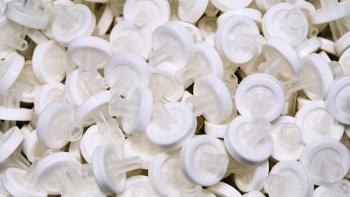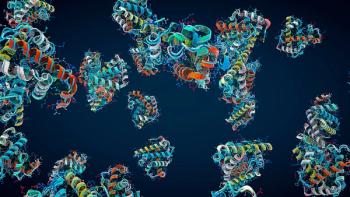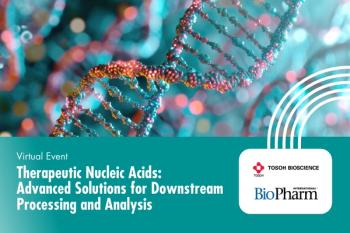
- BioPharm International, May 2023
- Volume 36
- Issue 05
- Pages: 16–20
Overcoming Harvesting Challenges for Adherent Cell-Culture Processes
Optimization strategies that leverage advanced technologies are essential for maximizing yield and quality.
Adherent cell culture is widely used, at least at small scale, for production of many next-generation therapeutics, including viral vectors for gene and gene-modified cell therapies and non-genetically modified cell therapies. With rapidly increasing demand for these advanced medicines, there is a need to overcome challenges with scale-out and scale-up of adherent manufacturing processes, including the cell harvesting step—whether the cells are discarded or collected as product.
Many different adherent approaches and product types
Adherent cell culture for the production of biopharmaceutical products can be implemented in a number of ways for many different types of biologics, according to Ian Goodwin, director of program design in FUJIFILM Diosynth Biotechnologies’ Program Design & Global Analytical Strategy group. Monoclonal antibodies (mAbs), recombinant proteins, and most viral vectors are grown in suspension and generally do not require the cells to be collected. For products secreted into the media, the supernatant is collected and the cells are discarded. If the product is not secreted or is both internalized and secreted, the cells must first be lysed to release the product, and then the lysate is collected. In both cases, the collected bioprocess fluid undergoes filtration, often depth filtration followed by sterile filtration.
Adherent cells, as the name implies, require a substrate or scaffold to which they can attach. At small scale, flatware systems provide the relevant surfaces. At larger scale, fixed-bed bioreactors provide the support. Microcarriers, or beads composed of various synthetic materials, can be used as surfaces for the cells to bind to if suspension-like conditions are preferred.
Two main harvesting approaches
Regardless of the method used to support adherent cells and the scale of the process, the cells must be detached from their support(s). Common principles apply to all cell detachment operations for the different applications, according to Clément Dumont, product manager at Univercells Technologies. “Whether the cells are used to produce biologics or directly used as the final product, the detachment process will involve exposing cells to enzymatic and potentially mechanical actions. Specificities in the process will arise depending on different considerations, mainly the type of cells, their intended use, and the scale at which the operation is performed,” he explains.
For example, human embryonic kidney 293 (HEK293) cell cultures in T-Flasks for small R&D experiments can typically be detached by following a simple sequence of actions: remove media, add a detachment enzyme and incubate, then collect the cells, Dumont says. Typical enzymes include trypsin or Accutase (Invitrogen). Cell collection is often assisted by manual shaking of the flask (mechanical action) during the passage steps.
For most large-scale, multi-layer flask-based processes, enzymatic harvesting is typically employed. This method is also used to remove adherent cells from microcarriers and fixed-bed bioreactors, as the physical method is not suitable, notes Lee Seung-sun, lead scientist for the manufacturing, science, and technology upstream processing team at Samsung Biologics. “Particular care must be taken when harvesting the cells intended for use as cell therapies to avoid damaging the cell membrane and extracellular matrix, even when using enzymatic processes, as certain enzymes can degrade these important cellular features,” he adds.
When scaling up, however, the same actions as those used at the R&D scale must be reproduced, but for a much higher surface area. That can add complexity, according to Dumont. “Detaching cells from a 40-layer cell factory (CF40), for example, may require dedicated equipment for fluid and vessel handling or to apply mechanical action. These special requirements can become impractical when large numbers of vessels are involved,” he contends.
Microcarriers present a different scenario. “Cells and microcarriers may be chemically treated and, if the microcarriers are insoluble, the mixture passed through a mesh to separate cells. If the microcarriers can be dissolved with pectinase, treatment with this enzyme frees the cells for further processing,” observes Michael Baker, senior director of viral gene therapy process development for FUJIFILM Diosynth Biotechnologies.
There are cases where cell therapies are grown in adherent-like conditions but with somewhat loose attachment of the cells, eliminating the need for the use of dissociation reagents, according to Goodwin. He also stresses that critical process parameters and the design space for cell harvesting may change as projects move from pre-clinical through commercial stages or scales; even so, Goodwin recommends avoiding any changes to the harvest methodology whenever feasible.
Scaling-out challenges
Cell types that require adherent culture are subjected to scale-up and harvest challenges that do not impact suspension culture. Given that the maximum scale at which adherent cell culture can be performed in flatware is finite, scale-out rather than scale-up is required to produce larger product quantities, particularly for expressed products. “Scaled-out processes are more labor-intensive and require more space, time, and people, potentially placing product quality at risk,” comments Baker.
The fact that cell-culture processes run in flatware cannot be automated and involve large numbers of manual operations also means that manufacturers need experienced and well-adept cell scientists who can help reduce the potential for errors during the implementation of sophisticated harvesting processes, according to Seung-sun.
“Currently, efficient culture vessels are not available for production and harvesting of adherent cell cultures. While multi-layer flasks could be used, they present some limitations, such as minimal surface area for cell proliferation. Due to the lack of efficient culture vessels, harvesting such cells still requires help from CO2 incubators and manual operations,” Seung-sun adds.
It is worth noting, Seung-sun continues, that most cell therapy products (i.e., chimeric antigen receptor T cells, mesenchymal stem cells) manufactured today are autologous, patient-specific therapies that can be manufactured at small scale. In addition, Baker notes that many treatments produced using adherent cell culture target ultra-rare indications where commercial-scale manufacture does not require significant scale up, and therefore, 2D reactors can be a viable way of producing the drug substances.
Similarly, the numbers of cells required for typical cell therapy applications are lower than those required to produce biologics. For these products, the challenge then becomes, according to Goodwin, the need to produce them in closed, single-use systems to minimize the sterile boundary of the manufacturing process and reduce the risk of contamination.
Hurdles to scaling up
While autologous cell therapies dominate the market today, many candidates in the pipeline are allogeneic, or donor-derived. As such, Seung-sun believes that the ability to effectively scale up adherent cell-culture processes will be crucial for the commercialization of future cell therapies.
For processes that do require scaling, Baker points out that fixed-bed bioreactors attempt to overcome issues of scaling out by concentrating surface area into a single unit using intricate fiber matrices or scaffolds that are conducive to cell growth. Microcarriers, meanwhile, enable the use of stirred-tank reactors and suspension-like conditions. “These attributes make 3D reactors and microcarriers good options for products made in adherent cells lines intended to treat larger patient populations and/or that require larger volumes,” he concludes.
Scaling up is not problem-free, however. Products that are retained intracellularly in adherent cells require cell collection. In very small-scale settings such as well plates and dishes, the cells can be mechanically manipulated (scraping) and collected at a very high efficiency, according to Baker.
Larger fixed-bed bioreactors must also be seeded with cells. In the context of seed train operations, Dumont emphasizes that the increasing number of flatware units required to generate sufficient cell quantities pose operational constraints. “Large equipment and associated labor are needed to manipulate the large number of units, leading to large CAPEX [capital expenditures] and OPEX [operating expenses], while also requiring more manual (not automated) manipulations that increase the risk of contamination and low reproducibility,” he says. Large harvesting volumes can also be a challenge. “Further processing and concentration of the cells might be required before the next steps, which is especially problematic for seed-train operations as multiple passages are required during the whole process,” Dumont remarks.
Processes using microcarriers, meanwhile, can be difficult to transfer and tend to require more optimization to reach a suitable process at scale, according to Dumont. “Shear stress and bead aggregation are common drawbacks that need to be addressed. Those bioreactors have a large volume leading to large footprint[s] as well,” he says.
In addition, chemical releasing agents must then be removed from the final product matrix as they are considered process-related impurities, Baker observes. He also notes that when microcarriers are used to grow adherent cells in suspension, extractable and leachable concerns for either dissolving the microcarrier or extracting the microcarriers should also be considered.
Finally, Seung-sun notes that it is not possible with current fixed-bed bioreactors to sample cells and obtain direct analytical data on the cell condition, metabolic changes, or the number of viable cells. “At best, it is possible to estimate the number of viable cells based on the glucose concentration in the media,” he explains.
A few optimization strategies
Nearly all aspects of the adherent cell-culture process can be optimized in one way or another. First, the detachment process can be optimized to account for different types of cells with different attributes and behavior profiles with respect to fragility/resistance to degradation, aggregation, etc., according to Dumont. Such optimization will result in different choices of enzymes, incubation times, and levels of mechanical action. “The choice of technology for industrializing this process is crucial. A good balance between rapid and simple operation on one side and flexibly accommodating various process types on the other needs to be found,” he states.
Optimization of conditions during enzyme treatment for cell detachment can also be an important strategy, Seung-sun observes. “Investigation of concentration, time, and temperature, along with maximization of the contact area of the culture vessel with the enzyme can help minimize cell damage and improve harvest yield,” he says. Goodwin adds that a design-of-experiment approach can be beneficial for optimizing cell lysis and removal of the lysis reagent (through various purification steps).
For cells grown as therapeutic products, beyond the use of a closed environment to ensure sterility and reducing the risk of contamination, Goodwin observes that any process for disruption of cell attachment must be optimized for release of the cells while minimizing degradation of the structural integrity of the cells, which can potentially impact efficacy, potency, and/or safety of the cell-therapy product.
Technology advances are helping
The biopharmaceutical industry, while conservative, has its foundations in innovation. Cell harvesting operations have benefited from the ongoing drive to improve performance and reduce the cost of biologic drug manufacturing. Novel chemical dissociation reagents and physical disruption methods continue to be developed and published to help investigators improve cell collection procedures, according to Baker. He adds that automated procedures for flatware have also been recently introduced that can reduce labor-intensive procedures by 30–50% for cell culture and cell collection steps.
Seung-sun highlights new culture devices such as Wilson Wolf’s G-Rex, Terumo’s Quantum, Lonza’s Cocoon, and Miltenyi Biotech’s CliniMACS systems, but does note that most of these “cell-therapy-production-in-a-box” solutions are designed to support suspension-based cell culture. Univercells Technologies, meanwhile, focuses on improving viral vector manufacturing with technologies that enable process intensification and chaining.
Recent efforts at the company, Dumont notes, led to the development of an efficient solution for harvesting cells from its scale-X fixed-bed bioreactors at the bench scale to support optimized seed trains. “The bench-top scale-X cell collect module allows for intensified cell growth in a fixed-bed bioreactor, significantly increasing the process intensification, reducing footprint, and operation required,” he says.The module retrieves cells through a combination of enzymatic and mechanical action, providing high cell harvest yields (up to 2.1x109 cells/m²) with excellent viability (>90%), according to Dumont. “The automated control system supports configurable harvest protocols and the pre-sterilized closed system reduces the reproducibility and aseptic risk issues associated with flatware while also reducing material and labor costs,” he adds.
Hope is for closed, automated processing in the future
In the end, Dumont emphasizes that successful cell harvesting depends on the specific process and the technologies selected for industrializing that process. “The production platform needs to support rapid and simple operations while offering the flexibility to accommodate various process types,” he states.
Continued advances in technology are expected. Goodwin points to improved solutions for cell collection that will enable maximization of cell recovery, particularly in closed systems. “Either cell collection procedures will continue to evolve to support large-scale processes, or culture vessels will be engineered specifically for the purpose of cell collection,” he comments.
The move to closed systems will continue and adoption of automated controls will also increase—both to reduce risk of operator error and contamination and minimize operational differences between production batches, according to Goodwin. These advances will also help drive down manufacturing costs, he says.
Separately, Seung-sun expects the cell therapy market to gradually shift toward suspension-based cell culture. “Adherent cell culture is much more inefficient compared to suspension culture. The progress seen in industrial biologics manufacturing provides incentive to achieving similar improvements for next-generation therapeutic production,” he observes. One technology that may facilitate this shift is single-use 3D vertical wheel bioreactors, which Goodwin notes have been shown to be successfully used to convert adherent cells to a suspension growth model with and without microcarriers.
Dumont agrees that moving away from scale-out manual cell culture and harvest will fundamentally change the paradigm of this type of operation. “Choosing a closed, automated solution for cell culture and harvest can de-risk the operations and reduce costs significantly. Ultimately, this will lead to increased quality and cost-efficiency for the industry,” he concludes.
In general, Baker insists there should be a strong emphasis on forward-looking, scalable options. “For both biologics and cell therapy applications, adherent or adherent-like culture should use technologies that reduce the sterile boundary and incorporate up-to-date manufacturing contamination control strategies. Staying current on industry trends and technology will lead to more manufacturing batch success (less loss), more efficient operations through automation, and less safety concerns around product integrity,” he concludes.
About the author
Cynthia A. Challener, PhD, is a contributing editor to BioPharm International.
Article details
BioPharm International
Vol. 36, No. 5
May 2023
Pages: 16–20
Citation
When referring to this article, please cite it as Challener, C. Overcoming Harvesting Challenges for Adherent Cell-Culture Processes. BioPharm International 2023 36 (5).
Articles in this issue
over 2 years ago
Expanding the Emerging Therapeutic Horizonover 2 years ago
Challenges of Expanding CAR-T Cell Therapy into Solid Tumorsover 2 years ago
Contextualizing Single-Use Wasteover 2 years ago
Data Integrity Pitfallsover 2 years ago
Optimizing the Manufacture of Emerging Therapiesover 2 years ago
FDA and Industry Prepare for End to COVID-19 Emergencyover 2 years ago
Measuring Quality in a Cultureover 2 years ago
The Smart Benefit of Digital Systems in Preclinical Studiesover 2 years ago
Springing Forward!over 2 years ago
Young Pups and LeopardsNewsletter
Stay at the forefront of biopharmaceutical innovation—subscribe to BioPharm International for expert insights on drug development, manufacturing, compliance, and more.




